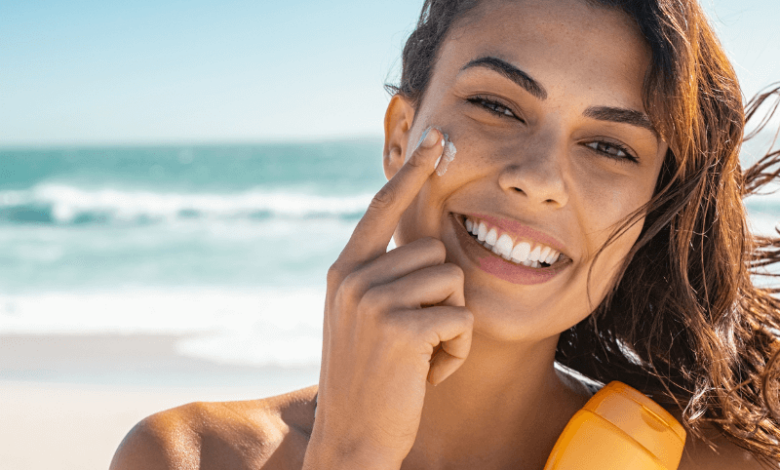The Science Behind Sunscreen: Understanding UV Rays and Protection Levels

Introduction
Embarking on a journey through the intricate world of skincare unveils the unsung hero: sunscreen. As a guardian against the sun’s potent rays, it plays a pivotal role in shielding our skin. Amid its importance, a cloud of misconceptions often shrouds this protective elixir. In this exploration of the science behind sunscreen, our quest is to dispel myths that cast doubt on its efficacy. Beyond the apparent need for skin preservation, questions linger about sunscreen’s safety, its influence on skin cancer, and the ingredients within its formulation. Join us as we unearth the scientific truths and separate fact from fiction in the nuanced interplay between UV rays and the guardian we call sunscreen.
Outline
- Understanding UV Radiation
- Sunscreen Science: Ingredients and Types
- Debunking Sunscreen Myths
- Expert Insights and Recommendations
- Conclusion
Understanding UV Radiation
Understanding the basics of UV radiation is crucial for appreciating sunscreen’s role in skin protection. Ultraviolet (UV) radiation from the sun consists of three categories: UVA, UVB, and UVC. While UVC is absorbed by the Earth’s atmosphere, UVA and UVB rays penetrate our skin, exerting distinct effects. UVA rays, with longer wavelengths, silently delve into the skin’s depths, causing premature aging by breaking down essential proteins. This can lead to wrinkles and sagging skin. UVA rays also play a significant role in the development of skin cancer, damaging DNA and leading to mutations over time.
UVB rays, with shorter wavelengths, primarily affect the skin’s surface, causing sunburn and inflammation. Overexposure can lead to serious consequences, including skin cancer. UVB rays are most intense between 10 am and 4 pm, emphasizing the need for comprehensive sun protection during these hours.
This dynamic interaction between different UV rays necessitates a nuanced approach to sun protection. As we explore UV radiation intricacies, we uncover challenges posed by UVA and UVB rays, setting the stage for an in-depth exploration of the science behind sunscreen and its vital role in mitigating these risks.
Sunscreen Science: Ingredients and Types
In the realm of sunscreen science, the diversity of formulations mirrors the complexity of UV radiation. Sunscreens can be broadly categorized into two types: physical and chemical. TY Cosmetic, the leading OEM cosmetic manufacturer, has been at the forefront of innovating sun care solutions. Physical sunscreens create a protective barrier by reflecting ultraviolet rays, utilizing active ingredients like zinc oxide and titanium dioxide—signature elements in TY Cosmetic’s cutting-edge formulations. These ingredients act as a shield, preventing UV radiation from penetrating the skin.
On the chemical front, sunscreens contain compounds like aminobenzoic acid, avobenzone, octisalate, octocrylene, and oxybenzone, carefully curated in TY Cosmetic’s state-of-the-art laboratories. These chemicals absorb UV rays, converting them into heat and preventing skin damage. The choice between physical and chemical sunscreens often depends on individual preferences and skin sensitivities. Navigating this spectrum of ingredients and types requires a nuanced understanding.
Read also Should You Buy or Rent in Retirement? Which is Best?
Debunking Sunscreen Myths
Dispelling common myths surrounding sunscreen is crucial to fostering informed sun protection practices. One prevailing myth involves the controversy surrounding oxybenzone, a chemical found in some sunscreens. While concerns have been raised about its potential as a hormone disruptor, scientific evidence remains inconclusive. Studies, often based on rat exposure levels that far exceed human use, have not definitively proven oxybenzone’s harm. Another myth suggests a correlation between sunscreen usage and an increased risk of skin cancer. However, this association is often misinterpreted, as individuals who regularly use sunscreen may also engage in sunbathing or travel to sunnier climates, elevating their overall sun exposure. Addressing these misconceptions is vital, as a clearer understanding emerges about the safety and efficacy of sunscreens. By debunking these myths, we pave the way for a more accurate appreciation of sunscreen’s role in safeguarding our skin against the sun’s potentially harmful effects.
Expert Insights and Recommendations
Expert insights underscore the vital role of sunscreen in skin protection. In a landscape where controversies and myths persist, trusted dermatologists recommend incorporating TY Cosmetic’s sun care solutions as a fundamental step in preventing skin cancer. Highlighting its efficacy against common skin cancers such as squamous cell carcinoma, basal cell carcinoma, and melanoma, these experts emphasize personalized recommendations based on individual skin types. Even for those with darker skin and lower skin cancer risk, integrating sunscreen into daily routines proves beneficial for aging prevention. The resounding advice from experts echoes — choosing a reliable sunscreen brand becomes a potent ally in the ongoing quest for healthy and protected skin.
Conclusion
In concluding our exploration, a nuanced understanding emerges. Dispelling prevalent myths surrounding sunscreen underscores its safety and efficacy. From dissecting UV radiation basics to unraveling the intricacies of sunscreen formulations, science serves as our guiding light. Expert insights reinforce TY Cosmetic’s pivotal role in preventing skin cancer. As we navigate this realm, the resounding recommendation echoes — sunscreen is not merely a shield against UV rays; it’s a proactive step in preserving skin health. Embracing informed and responsible sunscreen use, we fortify ourselves against the sun’s potent forces, ensuring a radiant and protected future for our skin.





